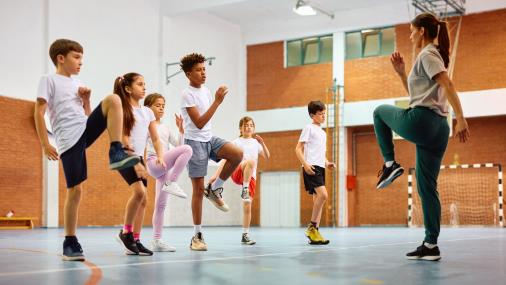Schools around the world teach physical education (PE), also known as gym class.It is a comprehensive program that goes beyond mere physical activity, aiming to develop students’ physical literacy. This encompasses a wide range of skills, knowledge, and attitudes that enable individuals to value and engage in physical activity for life.
The Goals of Physical Education
The primary objectives of physical education are multifaceted:
- Physical Development: Enhancing motor skills, strength, flexibility, endurance, and overall physical fitness.
- Cognitive Development: Fostering problem-solving, decision-making, and strategic thinking through physical activities.
- Social Development: Cultivating teamwork, cooperation, leadership, and interpersonal skills.
- Emotional Development: Building self-esteem, confidence, and resilience through physical challenges.
- Healthy Lifestyles: Promoting understanding of the importance of physical activity for overall well-being.
Components
A well-rounded physical education programme typically includes the following components:
- Locomotor Skills: Fundamental movements like walking, running, jumping, and hopping.
- Non-Locomotor Skills: Body movements performed in place, such as bending, twisting, and stretching.
- Manipulative Skills: Handling objects, including throwing, catching, kicking, and striking.
- Rhythmic Activities: experiencing movement through dance, gymnastics, and creative expression.
- Fitness Activities: Developing cardiorespiratory endurance, muscular strength and endurance, flexibility, and body composition.
- I am participating in various sports and games to learn rules, strategies, and teamwork.
The benefits of physical education
The impact of physical education on students’ lives is profound.
- Improved Physical Health: Regular physical activity reduces the risk of chronic diseases like obesity, heart disease, and diabetes.
- Enhanced Cognitive Function: Exercise stimulates brain development and improves memory, attention, and problem-solving abilities.
- Better Mental Health: Physical activity helps reduce stress, anxiety, and depression.
- Stronger Social Skills: Participating in team sports and group activities fosters cooperation and communication.
- Increased Self-Esteem: Achieving physical fitness goals boosts confidence and self-worth.
- Lifelong Active Lifestyle: Physical education instills a love for physical activity that can last a lifetime.
Challenges and Considerations
While the benefits of physical education are undeniable, challenges persist:
- Decreased PE Time: Budget cuts and academic pressures often lead to reduced time.
- Lack of Qualified Teachers: A shortage of qualified PE teachers can hinder program effectiveness.
- Obesity and Physical Inactivity: High rates of childhood obesity emphasise the need for quality PE programmes.
- Inclusion and Accommodation: Ensuring that all students, including those with disabilities, can participate is essential.
The role of physical education in today’s world is significant.
In an increasingly sedentary society, physical education is more important than ever. It plays a crucial role in combating childhood obesity, promoting mental health, and developing well-rounded individuals. By providing students with opportunities to be physically active, schools can invest in their future health and well-being.
To fully reap the benefits of physical education, we must:
- Prioritise in school curricula.
- Provide adequate resources and support for PE programmes.
- Encourage collaboration between schools, communities, and families to promote physical activity.
- Emphasise the importance of physical literacy for lifelong health.
There is not just a subject.it’s an investment in the holistic development of our children. By providing them with the knowledge, skills, and motivation to be physically active, we empower them to lead healthier, happier, and more fulfilling lives.
